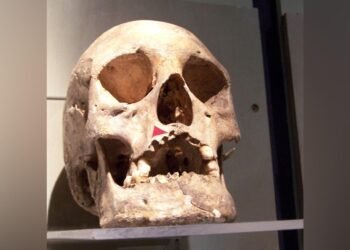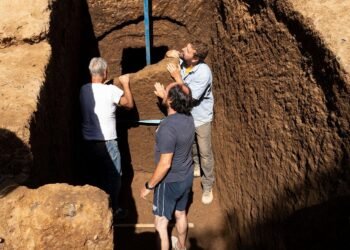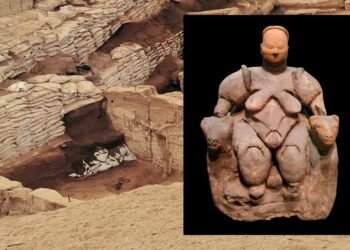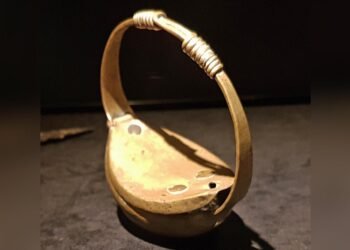A team of archaeologists and anthropologists working on the restoration of the Gothic cloister at the Royal Monastery of Santes Creus, a Catalan cultural heritage site located near Barcelona, has uncovered the intact human remains of a dozen members of the Catalan nobility dating back to the 13th and 14th centuries.

The remarkable finding, described as “exceptional” by the researchers, was announced in a press conference by the autonomous community of Catalonia’s Department of Culture, the “La Caixa” banking foundation, and a consortium of researchers.
Six sarcophagi were opened within the cloister, revealing the remarkably well-preserved remains of nobles from centuries past. Contrary to expectations, the tombs had not been plundered, allowing for a rare glimpse into medieval funerary customs.
Archaeologist Josep Maria Vila, who led the excavation, expressed astonishment at the pristine condition of the remains, noting that such intact finds are unprecedented in Catalonia. He remarked, “In no other site we have excavated have we found so many remains in such good condition.” The sarcophagi, adorned with heraldic symbols, provide clues to the identities of the deceased, who belong to prominent Catalan families including Cervelló, Cervera, Queralt, Puigvert, and Montcada.
Through careful analysis of human tissue and textile fabric samples extracted from the tombs, researchers hope to glean insights into the lives, diets, and health of the individuals interred at Santes Creus. Additionally, the finding offers an opportunity to study medieval burial rituals and social structures.
Carme Bagés from the Catalan Agency of Cultural Heritage stated that it could serve as a reference study for understanding how social groups conducted burials during the Middle Ages. The Royal Monastery of Santes Creus, already a popular destination for visitors, is expected to attract increased attention following this remarkable find.
The Royal Monastery of Santes Creus, a 12th-century Cistercian abbey situated in the Catalan province of Tarragona, holds immense historical and architectural significance. Its origins trace back to approximately 1160, serving as a familial mausoleum for noble lineages and a symbol of Catalonia’s enduring heritage.























